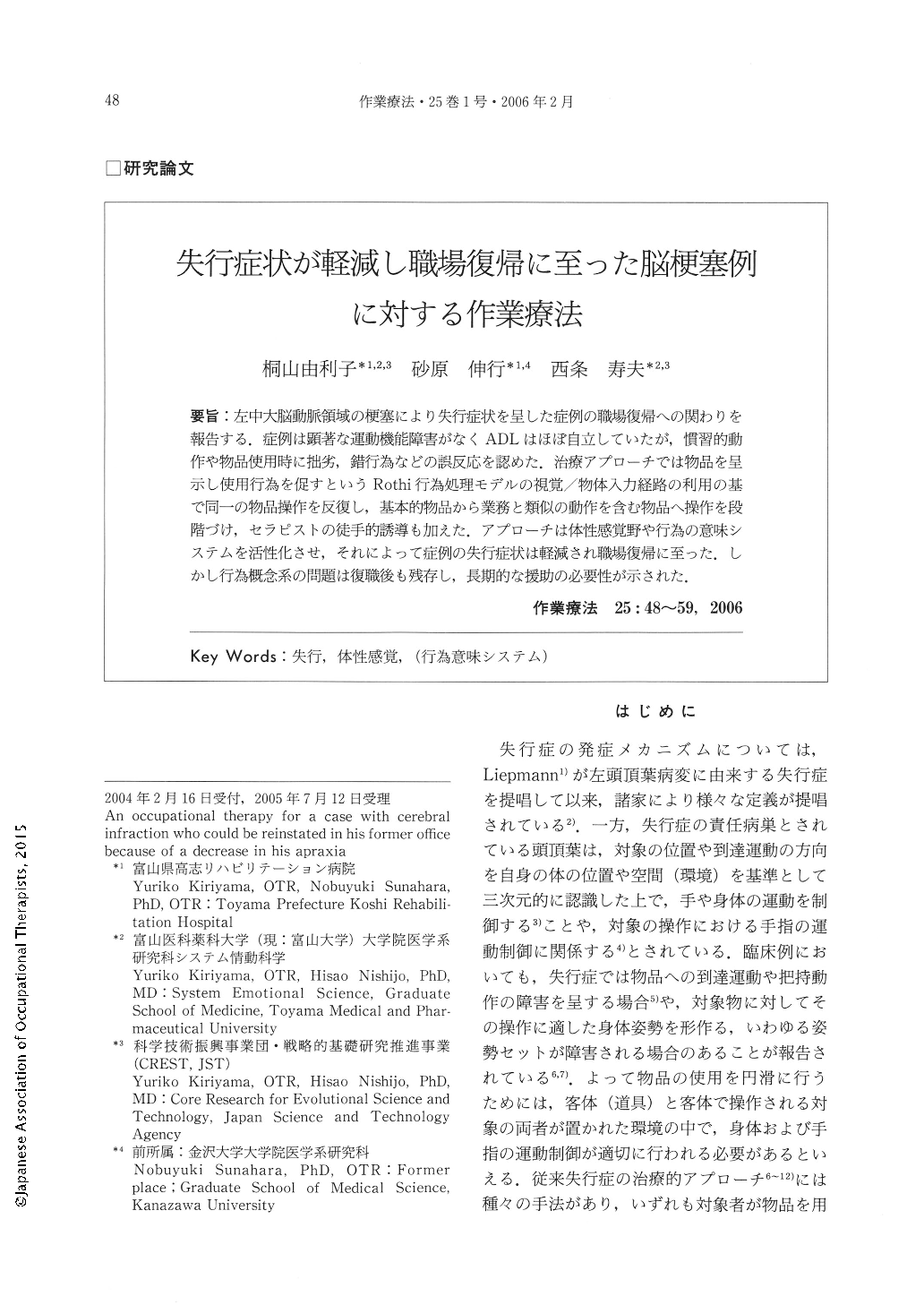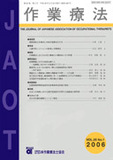Japanese
English
- 販売していません
- Abstract 文献概要
- 1ページ目 Look Inside
- 参考文献 Reference
- サイト内被引用 Cited by
要旨:左中大脳動脈領域の梗塞により失行症状を呈した症例の職場復帰への関わりを報告する.症例は顕著な運動機能障害がなくADLはほぼ自立していたが,慣習的動作や物品使用時に拙劣,錯行為などの誤反応を認めた.治療アプローチでは物品を呈示し使用行為を促すというRothi行為処理モデルの視覚/物体入力経路の利用の基で同一の物品操作を反復し,基本的物品から業務と類似の動作を含む物品へ操作を段階づけ,セラピストの徒手的誘導も加えた.アプローチは体性感覚野や行為の意味システムを活性化させ,それによって症例の失行症状は軽減され職場復帰に至った.しかし行為概念系の問題は復職後も残存し,長期的な援助の必要性が示された.
We report a case of a 41-year old man who exhibited apraxia following left middle cerebral artery domain infraction, and was reinstated in his former office through an occupational therapy.
He displayed no conspicuous motor function disorder and was independent in his daily activity. However, in his habitual movements and tool use, he made some errors, which were classified as clumsy, parapraxis, etc.
We applied a vision and object input pathway to the action semantic system, which was suggested in a model of praxis processing by Rothi, to the therapy of the patient. With his hands, he repeated training in the movement of the same tools and objects. At first, he trained with basic tools. And he gradually trained similarly in his job. In this therapeutic approach, a therapist guided the patient's hand with his own hand to execute movements correctly. Eventually he returned to work because the level of his apraxia was decreased.
In this therapeutic approach, somatosensory cortices and the action semantic system were activated, and the level of his apraxia decreased. However, the disturbance in the patient's conceptual system of the action had remained in his praxis processing after he was reinstated in his former office.
Therefore, necessity of long-term help was indicated.

Copyright © 2006, Japanese Association of Occupational Therapists. All rights reserved.


